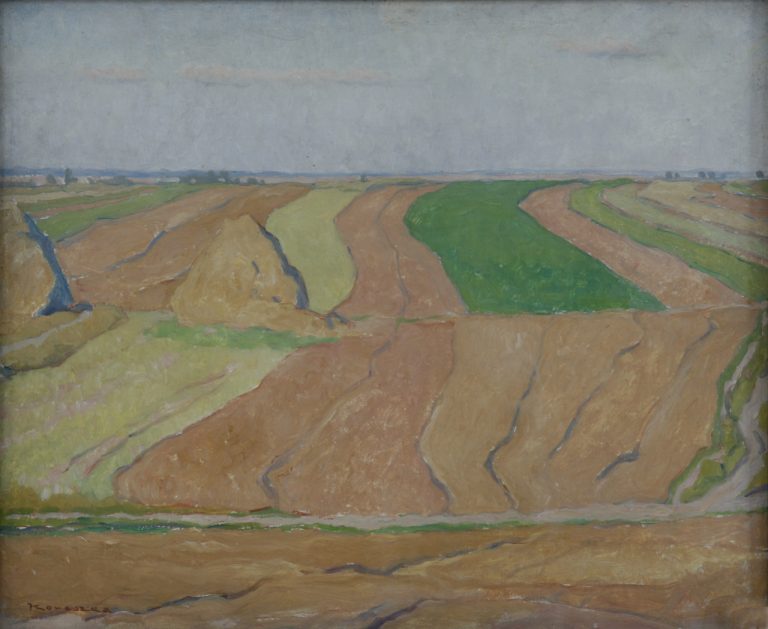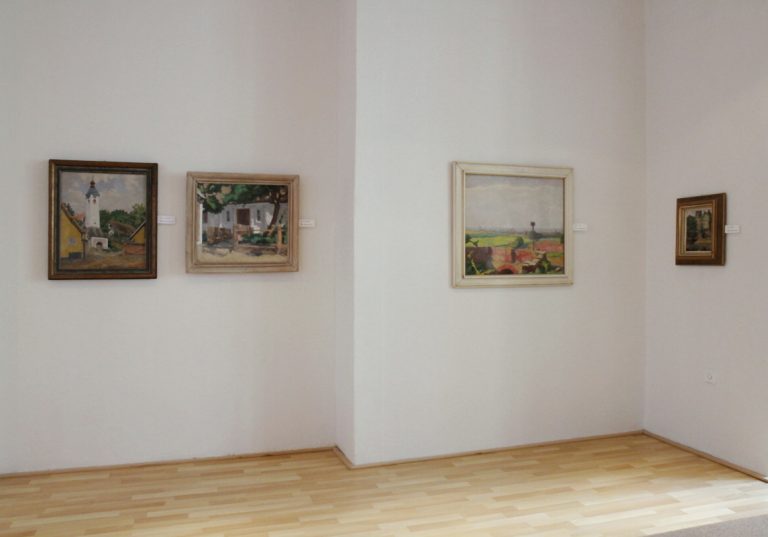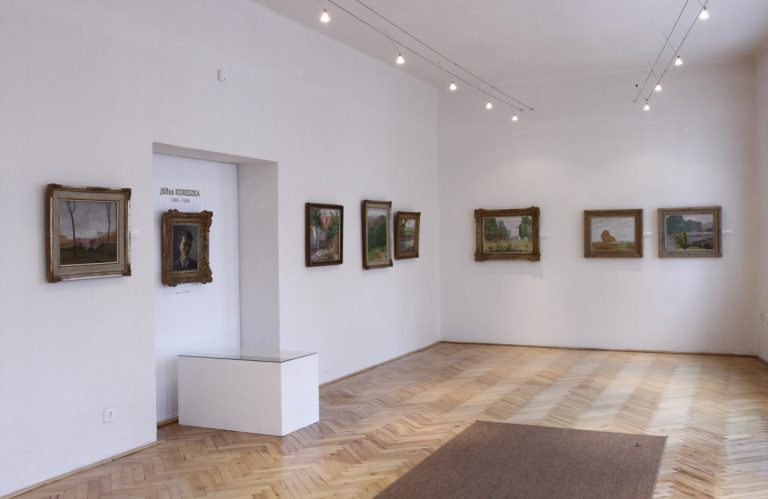Home › Exhibitions › Permanent expositions › Július Koreszka Gallery
Július Koreszka Gallery
Július Koreszka Gallery
The Július Koreszka Gallery – as a permanent exhibition of the Ján Mudroch Gallery in Zahorie, which was installed in the exhibition halls of the Zahorie Museum in Skalica – has been closed since 27 April 2021 after thirty years.
Its temporary presentation is currently being prepared in the exhibition halls of the Jan Mudroch Gallery in Zahorie. After the conversion of the gallery attic into new exhibition spaces, it will be part of the permanent exhibition.
Exposition
Zahorie Gallery of Jan Mudroch in Senica currently has two permanent exhibitions. The first is the Július Koreszka Gallery, professionally and methodically administered by the Záhorie Museum in Skalica since its establishment in 1991. It includes the exhibits from the Záhorie Gallery collection. The exhibition shows a selection from the artist’s bequest, a substantial part of which was purchased for the collections of the future gallery in 1973 from the artist’s wife, Františka Koreszková. The exhibition was conceived and curated by Mgr. Božena Juríčková.
Život Júliusa Koreszku
Painter Július Koreszka was born on 24 February 1895 in the village of Dojč not far from Senica into the family of a small farmer. He began studying at a grammar school in Bratislava but graduated in Skalica, where his parents moved in the meantime. In 1914 he began studying at the Academy of Fine Arts in Budapest, but a few months later he was sent to the front. As a direct participant in World War I, he witnessed the events that left its mark on him for the rest of his life. In 1919 – 1924 he continued studying at the Prague Academy of Fine Arts under Professor Maximilián Pirner. After leaving Prague, he settled in Bratislava, where he lived until 1936. When his first wife died, he moved to his parents in Skalica. He lived in his beloved city, in seclusion and modesty, for more than twenty years until his death on 1 December 1958.
Dielo Júliusa Koreszku
Paintings by the landscape painter Július Koreszka form a silent but permanent part of the Slovak art history of the first half of the 20th century. His landscapes are largely motivated by Skalica region, which the artist transformed through the tranquil harmony of realistic sensual points of departure, emotional associations and classical painterly language into authentic poetic form. In his artistic interpretation of the local landscape he placed emphasis on restrained post-Impressionist tradition supported by strong impressionist elements and flat decorative colours. The figure was excluded from his painting from the very beginning, or delimited into the marginal position. While living in Bratislava, he drew inspiration from the lyrical meditative Danube landscape with small figural staffage. Koreszka launched his artistic, highly lyrical genre painting (landscapes, and partially still lifes) during his studies in Prague. However, it was preceded by the period of World War I from which come several sketchbooks with pencil drawings with ordinary scenes from military life. In spite of external circumstances or unfavourable times, he adhered to the lyrical genre throughout his creative period.













